Eat Your Food, Move Your Bowels, Pass Water, and Lie Down
a book about Zen

2016
Print, Editorial, Transmedia
Mentor:
Brad Bartlett
Special Thanks:
Austin Redman
Related Project:
Self Realization
Eat your food, move your bowels … considers Zen as a position on the self, its presence in American counterculture, and provocation for new ways of creating throughout multiple media including a book, poster series, and installation (see Self Realization).
Posters


Image treatment of the poster series is about the dissolution of the ego and one's sense of having a distinct self, a theme that recurs throughout the book.


Book


Zen's ideal of ordinariness and emphasis on direct experience informed the book's title and material choices.





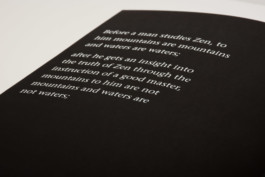

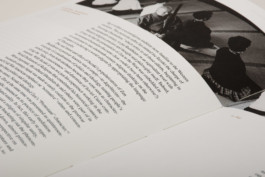
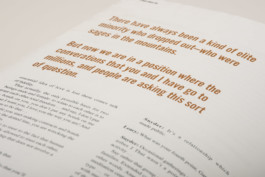









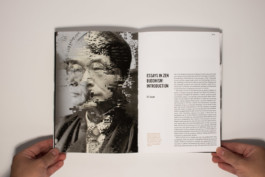

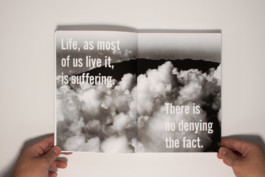

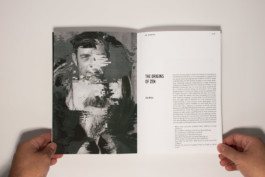



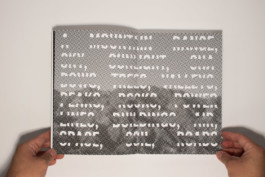


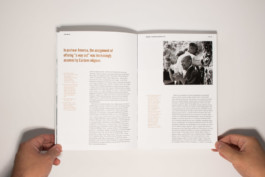

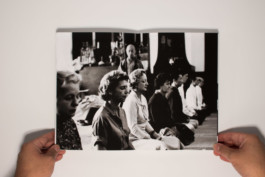







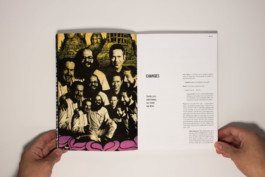

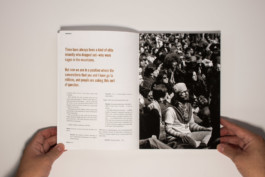


















Eat Your Food, Move Your Bowels, Pass Water, and Lie Down
a book about Zen

2016
Print, Editorial, Transmedia
Mentor: Brad Bartlett
Special Thanks: Austin Redman
Related Project:
Self Realization
Eat your food, move your bowels … considers Zen as a position on the self, its presence in American counterculture, and provocation for new ways of creating throughout multiple media including a book, poster series, and installation (see Self Realization).
Posters


Image treatment of the poster series is about the dissolution of the ego and one's sense of having a distinct self, a theme that recurs throughout the book.


Book


Zen's ideal of ordinariness and emphasis on direct experience informed the book's title and material choices.













Book opens with a primer on meditation juxtaposed with images of personal and impersonal pronouns blending into each other.






The photo of the mountains is laid out with a list of things in the photo. This spread recurs throughout the book, with the words and image dissolving as the mind goes deeper into a meditative state.



The chapter on D.T. Suzuki introduces Zen teaching as it was written and taught in Japan. Layout is symmetrical to reflect the body's position in meditation.




Alan Watts' presence in the book introduces Zen teaching as it was interpreted in the West.







After introducing Zen teaching, the book goes into the growth of Buddhism in America after World War II.







The chapter on the Beats is Watts' essay “Beat Zen, Square Zen, and Zen”, observations of what he considered the extremes of Zen practice in America.

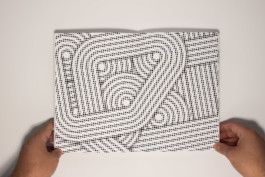




A roundtable discussion between Alan Watts, Timothy Leary, Gary Snyder, and Allen Ginsberg places Zen in the larger context of cultural movements in the 1960s.




Discussion of the Beats and youth culture is followed by a survey of artists that used Zen as a catalyst for their own practices.





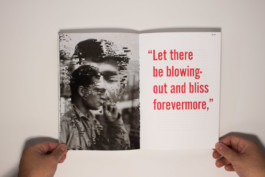







Final chapter on John Cage is laid out vertically to get the reader to physically turn through the expanses of silence he placed in the original text.






